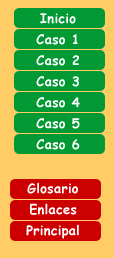Caso 5 - Growing Deeper
A dramatic and ideal bulb for class discussion is amaryllis.
The bulb is extremely large and after potting will produce a flower
in 4-6 weeks. Growth is rapid and will produce a tall flower stem
with large blooms. The size of the blooms invites close examination
and is excellent to use in the discussion of flower parts, pollination,
seed and fruit production. Once the flowers have opened, observe
the flower for signs that they are ready for pollination. The
prongs of the pistils open upward when the flower is ready to
accept pollen. Invite the class to play "bee" and transfer
the pollen from the anther to the stigma. A successful pollination
results in a swelling of the ovary. When ripe, seeds can be harvested.
The same procedure can be done with the paper white narcissus.
This whole process illustrates the complete cycle of growth.
There are a number of bulb look-alikes or impostors. Even though
they are often called "bulbs," they are botanically
different and are actually adaptations of plant parts to fulfill
a basic need.
Horizontal stems growing above the soil are called stolons and
those growing underground are called rhizomes. Strawberries and
spider plants are examples of plants that produce stolons. Iris
and quackgrass are examples of plants with rhizomes. From a point
on the stolon or rhizome, roots and upright shoots develop. The
beauty of this adaptation is that when these stems lie on the
soil or just below it, they have no need to spend a lot of energy
making strengthening tissue. Thus, they are able to direct all
their energy into a burst of rapid, primary growth.
A corm resembles a bulb externally but is very different in
structure. Crocus and gladiolus are examples of corms. Corms are
short, swollen, underground stems surrounded by the remains of
last years leaf tissue. Remove the paper cover and you can see
parallel lines. These are the nodes. Cut a corm in half and it
is solid in structure and not layered like a true bulb. The growth
of leaves and flowers from corms occurs at the expense of the
total corm being consumed. New corms form each season on top of
the old withered corm.
Tubers are another stem adaptation. Irish potatoes are stem
tubers. Stem tubers have "eyes" which are buds. The
area between the eyes are the internodes.
Another type of tuber is the root tuber. These are formed on
plants like dahlia and sweet potato.
These and other bulb look-alikes can be collected and examined
for external and internal differences.
|



